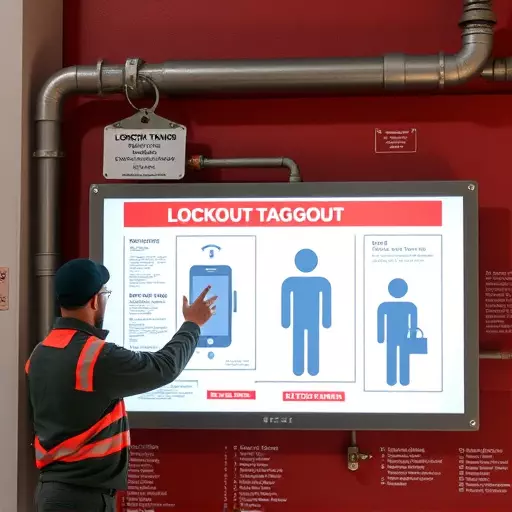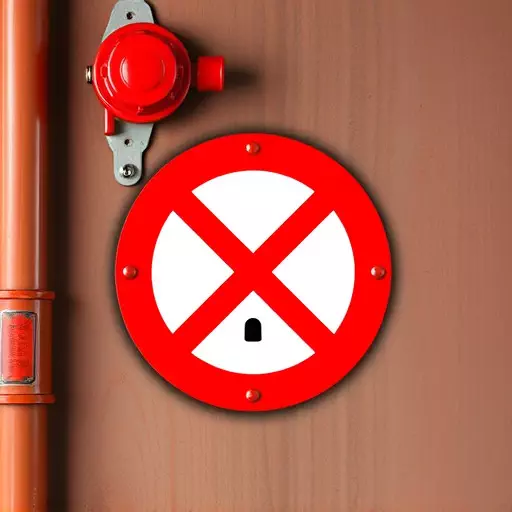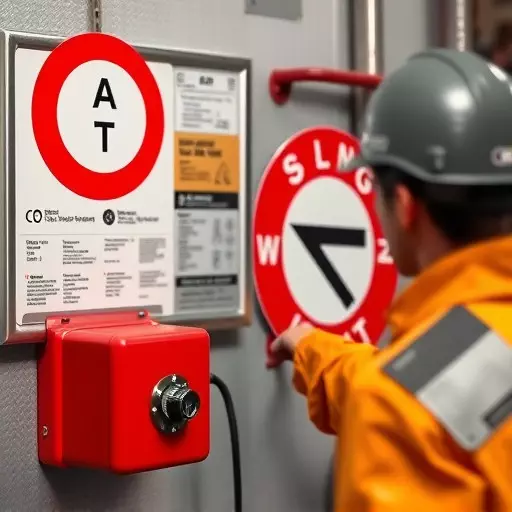OSHA's lockout/tagout standards are critical for worker safety during equipment maintenance, mandating comprehensive training, regular reviews, and effective energy control procedures. Organizations must identify all energy sources, control or isolate them, conduct inspections, and provide specialized training to ensure compliance. Clear signage serves as a visual reminder of L/T procedures, enhancing worker understanding and adherence to OSHA lockout tagout standards, thereby creating a safer work environment and reducing risks.
In today’s industrial landscape, ensuring safe energy control procedures is paramount. The OSHA lockout/tagout standards serve as a crucial guide, preventing accidents and saving lives. This article equips professionals with the knowledge to navigate these regulations effectively. We explore the significance of understanding OSHA guidelines, providing a comprehensive step-by-step guide for implementing energy control procedures, and highlighting the indispensable role of signage in fostering lockout tagout compliance training.
- Understanding OSHA Lockout/Tagout Standards and Their Importance
- Implementing Effective Energy Control Procedures: A Step-by-Step Guide
- The Role of Signage in Ensuring Lockout/Tagout Compliance Training
Understanding OSHA Lockout/Tagout Standards and Their Importance

Understanding OSHA Lockout/Tagout Standards and Their Importance
OSHA’s lockout/tagout standards are designed to ensure worker safety when dealing with energy sources during maintenance or repair activities. These regulations, part of the broader OSHA workplace safety guidelines, mandate specific procedures for de-energizing equipment and securing it through locking devices (lockouts) or tagging (tagouts). Adhering to these standards is crucial for preventing accidents and injuries in industrial settings.
Compliance with lockout/tagout requirements involves comprehensive training, such as energy control procedures training, for all employees. This training educates workers on identifying potential hazards, implementing effective lockouts and tagouts, and understanding their roles and responsibilities during equipment de-energization processes. Regular reviews and updates of these procedures are essential to keep up with changing workplace dynamics and technological advancements, ensuring a safe working environment at all times.
Implementing Effective Energy Control Procedures: A Step-by-Step Guide

Implementing effective energy control procedures is a critical aspect of workplace safety, especially when dealing with potential hazards associated with locked-out or tagged-out equipment. According to OSHA’s lockout/tagout standards, organizations must develop and implement comprehensive programs to ensure worker protection during maintenance or repair activities. The process begins with identifying all sources of energy within the work area, including electrical, hydraulic, pneumatic, chemical, and mechanical systems. Once identified, each energy source must be controlled or isolated using appropriate methods such as locking devices, valve shut-off, or disconnection from power supplies.
A step-by-step guide to effective energy control training involves educating employees on the importance of these procedures, conducting thorough risk assessments, and establishing clear protocols for lockout/tagout processes. It is essential to train workers on using specialized tools like lockouts, tags, and safety hooks correctly. Regular inspections and audits should be conducted to ensure ongoing compliance with OSHA standards and identify areas for improvement in energy control management.
The Role of Signage in Ensuring Lockout/Tagout Compliance Training

In ensuring effective lockout/tagout (L/T) compliance training, signage plays a pivotal role by serving as a visual guide and reminder. According to the OSHA (Occupational Safety and Health Administration) lockout tagout standards, clear and prominent signage is essential to inform employees about energy control procedures before they perform maintenance or service on equipment. This includes warning signs indicating the need for L/T, specific procedures to follow, and responsibilities of individuals involved.
Effective signage enhances understanding by providing step-by-step instructions, ensuring everyone knows how to safely de-energize and secure equipment. It also reinforces regular OSHA lockout tagout standards training, making it easier for workers to remember critical protocols. By utilizing these visual cues, organizations can create a safer work environment, reduce risks, and comply with regulatory requirements related to lockout tagout compliance training and energy control procedures training.


